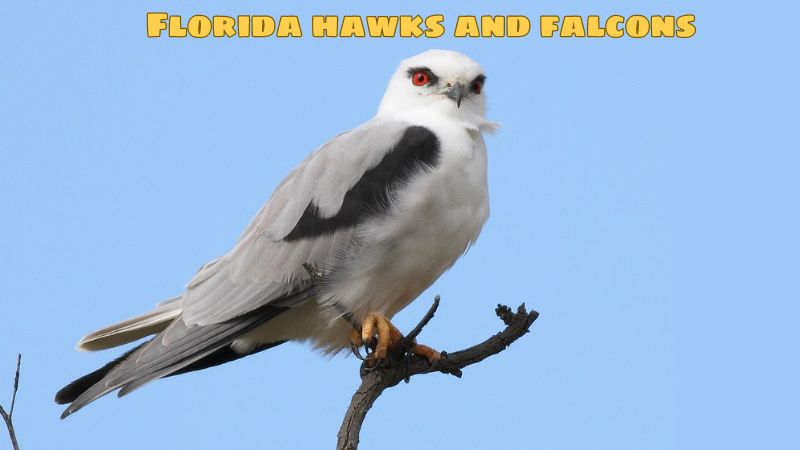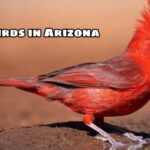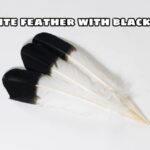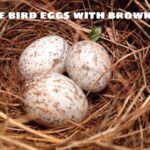Florida is home to an astounding array of raptors, as the state is renowned for its breathtaking scenery and abundant wildlife. These majestic birds of prey, commonly known as raptors, have adapted and thrived in Florida’s diverse ecosystems, contributing significantly to the state’s delicate ecological balance.
Florida hawks and falcons are two famous birds of prey, with their distinctive features and important roles in the ecosystem. Their presence not only creates balance in nature but also attracts the attention of birdwatchers and wildlife researchers. Let birdsofjoy.com tell you about florida hawks and falcons.
Types of florida hawks
Hawks, a diverse group of raptors, are among the most iconic and awe-inspiring birds of prey found in Florida. Recognized for their keen eyesight, powerful talons, and ability to soar, hawks are true masters of the skies. In the Sunshine State, several species of hawks have established their territories, each with their own unique adaptations and hunting strategies. These avian hunters, which range in size from the majestic red-tailed hawk to the swift Cooper’s hawk, are essential to preserving ecological balance because they manage rodent and other small mammal populations.
Hawks are characterized by their keen eyesight, allowing them to spot prey from great heights, and their incredible speed and agility when pursuing prey. This group of birds of prey exemplifies the beauty of natural design and is a testament to the wonder of Florida’s wildlife. In the following sections, we’ll delve into the unique characteristics and behaviors of some of the notable hawks that grace the Florida skies.
Red shoulder kite
- Scientific Name: Buteo lineatus
- Length: 16.9-24.0 in (43-61 cm)
- Weight: 17.1-27.3 oz (486-774 g)
- Wingspan: 37.0-43.7 in (94-111 cm)
In Florida, the Red-shouldered Hawk is the most prevalent type of hawk. It is characterized by its brilliant reddish-brown plumage and striking black and white markings. Preferring dense forest habitats, the Red-shouldered Hawk is often found perched in treetops, intently surveying its territory. However, it is not uncommon to see them on power lines along rural highways or even in suburban areas. Known for its distinctive loud, piercing call, this is the most vocal bird in Florida’s outdoors.
This hawk is an opportunistic predator, hunting on a diet that includes small mammals, amphibians, and reptiles. During the breeding season, the red-shouldered hawk puts on an impressive aerial display, soaring and diving to court potential mates. Although not considered globally threatened, habitat loss is a concern for this hawk in some areas of Florida, making its conservation an important topic for ornithologists and wildlife enthusiasts. Red-shouldered hawks are found year-round in Florida.
Red-tailed kite
- Scientific Name: Buteo jamaicensis
- Length: 17.7-22.1 in (45-56 cm) male, 19.7-25.6 in (50-65 cm) female
- Weight: 24.3-45.9 oz (690-1300 g) male, 31.8-51.5 oz (900-1460 g) female
- Male wingspan is 44.9–52.4 in (114–133 cm), female wingspan is 44.9–52.4 in (114–133 cm).
The red-tailed hawk is recognizable by the adult’s striking rusty-red tail plumage, as well as the “belly band” of darker feathers on the normally light breast and belly. This hawk is celebrated for its impressive size and majestic presence; In Florida, they are typically much larger than the more common red-shouldered hawk. The red-tailed hawk is an expert at soaring in wide-open spaces, with a wingspan of up to four feet. It is frequently spotted riding thermals in search of prey. This predatory bird is well-known for its flexibility because it can live in a range of environments, including cities, grasslands, and woodlands. Its diet includes small mammals, birds, and even reptiles, demonstrating its opportunistic hunting strategy. The red-tailed hawk is found year-round in Florida.
Sharp-legged hawk
- Scientific Name: Accipiter striatus
- Length: 9.4-13.4 in (24-34 cm)
- Weight: 3.1-7.7 oz (87-218 g)
- Wingspan: 16.9-22.1 in (43-56 cm)
The spike-legged kite looks a lot like the Cooper’s kite, but is much smaller. In fact, it is the smallest kite species in Florida and in the entire United States. However, distinguishing the two species can be a challenge due to their similar appearance. Both have slate gray plumage and red eyes, making field identification quite difficult. The spike-legged kite is only found in Florida during the winter, so if you see a hawk during the breeding season or summer, it is likely a Coop’s kite. Other ways to identify a spike-footed kite are its smaller size, square (instead of round) tail, slimmer legs, and the possibility that it lives deeper in the forest.
Cooper’s Kite
- Scientific Name: Accipiter Cooperii
- Length: 37–39 cm (14.6–15.3 in) Male, 42-45.5 cm/16.5-17.7 in woman
- Weight: 220–410 g/7.8–14.5 oz male, 330–680 g/116-24.0 oz
- Wingspan: 24.4-35.4 in (62-90 cm) male, 29.5-35.4 in (75-90 cm)
With Cooper’s hawk, you’ll notice we’re in a new genus. The body of a buteo hawk is strong, and its tail is short. Accipiter hawks are longer, both in the body and the tail being much longer than the body (and the wingtips when perched). We have a few more Buteos below, but since they are less common, we will move on to the Accipiters for a moment!
Cooper’s hawks are recognizable by their distinctive slate-gray plumage and striking red eyes as adults, although it can sometimes be difficult to tell them apart in young birds. They have a compact, muscular body that allows them to fly quickly and hunt with precision. Cooper’s hawks are known for their exceptional maneuverability and adaptability to a wide range of environments, from forests to the countryside. Their diet consists primarily of small birds, making them skilled hunters. Taking advantage of their thick cover, Cooper’s hawks use stealth and speed to pursue their prey, often ambushing them from cover.
During the breeding season, they build nests high in trees, displaying strong territorial behavior. Cooper’s Kites play an important role in controlling populations of smaller birds, contributing to the balance of Florida’s bird ecosystem. Their remarkable hunting abilities and ecological significance make them a fascinating study subject for ornithologists and bird enthusiasts in the state. Cooper’s Kites are found year-round in northern and central Florida, but only appear in South Florida during the winter. Breeding is not typically done in South Florida.
Short-tailed kite
- Scientific Name: Buteo brachyurus
- Length: 15.3-17.3 in (39-44 cm)
- Weight: 13.6-16.9 oz (385-480 g)
- Wingspan: 32.7-40.5 in (83-103 cm)
The short-tailed hawk is known for its unique appearance and distinctive coloring. One of the most fascinating aspects of the short-tailed hawk is its remarkable color dimorphism, in which there are two distinct color forms within the species, a dark form and a light form. The dark form has striking dark brown plumage on the upperparts, while the light form has pale gray plumage with a tawny head. Both forms share a white throat and underparts.
These hawks are found year-round in the southernmost regions of Florida, especially in the Everglades and the Florida Keys. During breeding season, you can locate them in the middle section of the state. Here in Brevard County, at least one pair is regularly found at Turkey Creek Preserve in Palm Bay.
Behaviorally, the short-tailed hawk is known for its agile flight and prefers open forests and wetlands. Its diet consists primarily of birds, especially small to medium sized species, which it catches in mid-air with remarkable accuracy.
Florida falcon species
Broad-winged falcon
- Scientific Name: Buteo platypterus
- Length: 13.4-17.3 in (34-44 cm)
- Weight: 9.3-19.8 oz (265-560 g)
- Wingspan: 31.9-39.4 in (81-100 cm)
The Broad-winged Hawk, a remarkable migratory bird of prey, graces the Florida skies during its annual fall migration, creating a fascinating sight for bird enthusiasts and ornithologists. These hawks embark on an incredible journey, traveling from their breeding grounds in North America to their wintering destinations in Central and South America. Their migration route passes via Florida, which is a crucial stopover where they rest and replenish their fuel supplies before moving on.
Recognizable by their compact size, broad wings, and brown plumage, broad-winged hawks exhibit distinct characteristics that set them apart. Their tails are decorated with prominent bands, making them easily recognized in flight. However, it is their calls and group behavior during migration that really attract attention. As they soar through the sky, broad-winged hawks emit high-pitched, shrill calls and often congregate in large flocks known as “kettles.” This behavior allows them to exploit the rising thermals, conserving energy for long-distance flight.
While migration is the most prominent phase of their presence in Florida, broad-winged hawks can also be found in the state’s forested areas during their non-migratory periods. Here, they primarily hunt small mammals, birds, and occasionally reptiles from the hides of forested habitats. There is a dark-colored broad-winged hawk, but they are usually seen in the western United States.
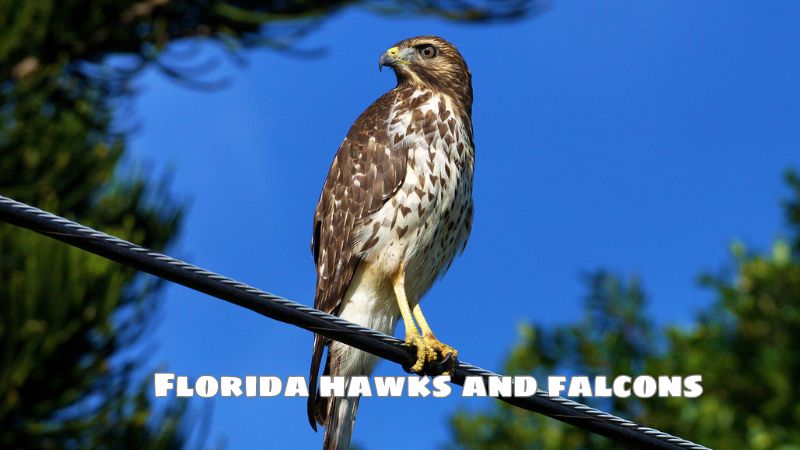
Northern Falcon
- Scientific Name: Circus hudsonius
- Length: 18.1-19.7 in (46-50 cm)
- Weight: 10.6-26.5 oz (300-750 g)
- Wingspan: 40.2-46.5 in (102-118 cm)
The Northern Harrier, a distinctive, low-flying bird of prey, graces the wetlands and marshes of Florida with its presence. This hawk is known for its unique physical characteristics, including its slender body, long wings, and a distinctive white rump that contrasts with its mottled brown plumage. (Snail hawks also have a white rump patch, so don’t confuse them based on that field marking.) Unlike many other hawks, Northern Harriers have an owl-like facial disc that aids their exceptional hearing, making them skilled hunters of small mammals and birds in dense vegetation.
One of the notable behaviors of the Northern Harrier is its ability to fly low and gracefully foraging, often hovering over marshes and grasslands, where it relies on its keen hearing to detect movement of prey below. Northern Harriers are a winter visitor to Florida, and I look forward to their return each year.
Eagle
- Scientific Name: Pandion haliaetus
- Length: 21.3-22.8 in (54-58 cm)
- Weight: 49.4-70.5 oz (1400-2000 g)
- Wingspan: 59.1-70.9 in (150-180 cm)
The Osprey is a distinctive bird of prey that occupies a prominent place in Florida’s coastal ecosystem. Recognized by its distinctive white head, black eye stripe, and powerfully curved bill, the Osprey’s appearance is iconic. The nickname “Fish Hawk” of this bird of prey accurately describes its primary dietary preference—fish. Ospreys are adept fishers and have evolved remarkable adaptations for catching prey underwater.
One of the notable behaviors of Florida’s ospreys is their ingenious use of utility poles as nesting sites. Instead of nesting in trees as is traditional, many pairs of ospreys in the state nest on utility poles and other man-made structures along the coast. This behavior highlights their ability to adapt to changing environments and demonstrates their resilience to habitat changes.
Ospreys play an important role in Florida’s coastal food chain by helping to regulate fish populations and providing a prominent visual presence along the state’s coastline. Their impressive aerial displays and hunting skills make them a favorite sight for birders and beachgoers. Ospreys are not considered true hawks.

